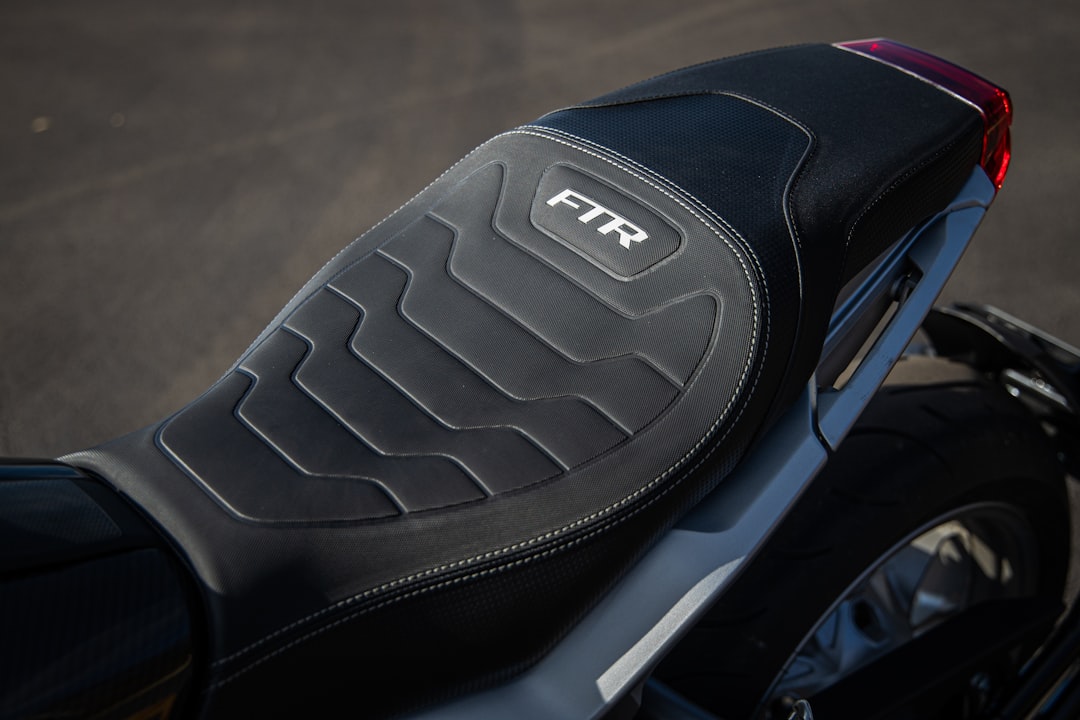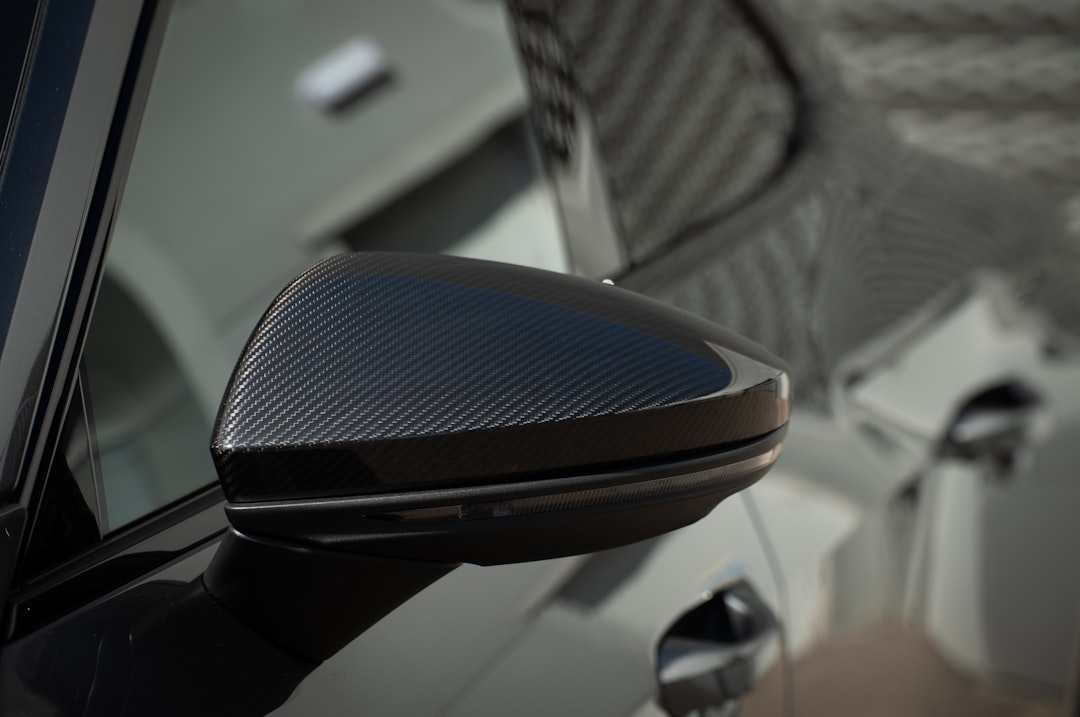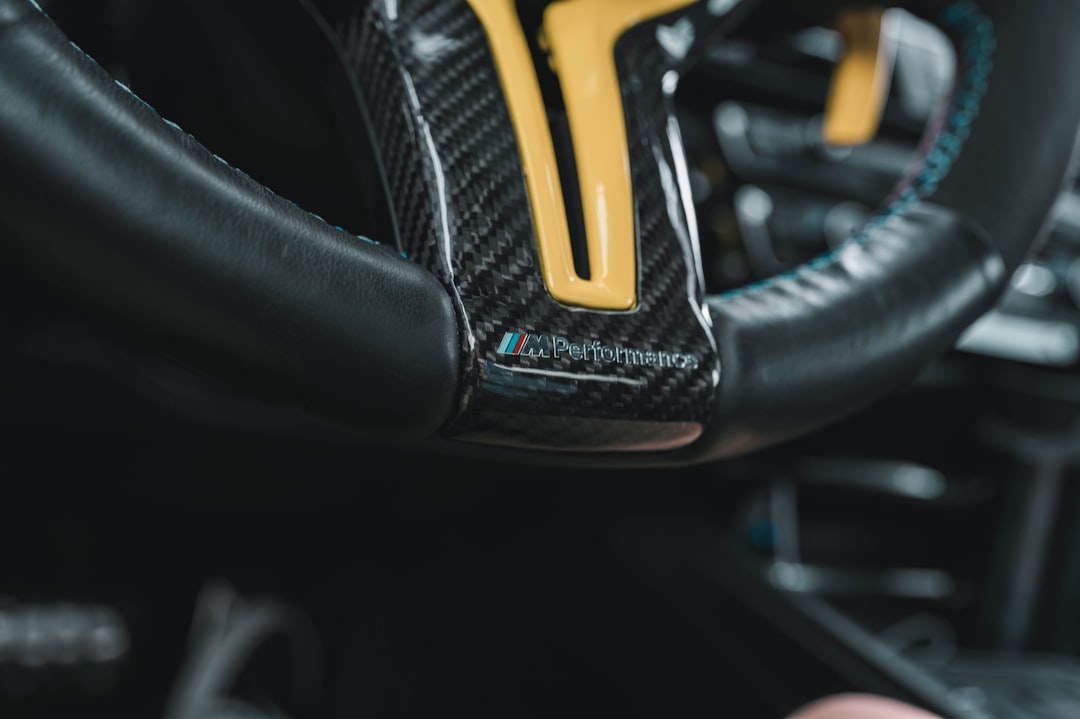

Engage prospects with a scan and streamline customer engagement with FREE QR code marketing tools by Sona – no strings attached!
Create a Free QR CodeFree consultation

No commitment

Engage prospects with a scan and streamline customer engagement with FREE QR code marketing tools by Sona – no strings attached!
Create a Free QR CodeFree consultation

No commitment
In today’s digitally driven world, QR codes have evolved from a novelty to a strategic powerhouse, bridging offline experiences with online actions and aligning with emerging QR trends. For car foot control manufacturers, QR codes deliver a simple, secure, and scalable way to connect physical accessibility equipment with digital resources. They remove friction for users and installers by making manuals, certifications, and support one scan away, without the burden of app downloads or complex onboarding.
Manufacturers that produce adaptive driving components such as left-foot accelerators, pedal extenders, pedal guards, and modular control systems face growing expectations for modern, user-centric touchpoints. Paper packets tucked into boxes or glove compartments are rarely read, easily lost, and impossible to update. As a result, high-value interactions at trade shows, showrooms, and installation sites often disappear into anonymity because they are not tracked in a CRM, which leads to missed follow-ups and lost deals.
Embedding QR codes on equipment, packaging, and marketing materials enables faster conversions, leaner operations, and richer customer intelligence. Dynamic codes give teams real-time control over content, so they can update instructions or compliance documentation after printing. Scan data flows into analytics and CRM platforms to make buyer intent visible across the product lifecycle, from first demo to post-install support and warranties. The result is a cleaner, more connected journey for users and a more measurable, higher-ROI pipeline for manufacturers and their partners.

QR codes bridge the gap between physical touchpoints and digital outcomes, making it easier to achieve goals like seamless product education, support enrollment, and real-time feedback. They replace outdated analog processes that create friction: printed manuals become video hubs, warranty cards become prefilled mobile forms, and clunky customer hotlines give way to self-serve support flows that capture context and intent with QR codes for forms.
Begin by mapping your most important moments of engagement. For car foot control manufacturers, those moments typically include product unboxing, installation, road-testing, showroom demos, and post-purchase service. Think about what the user needs in each moment: verified safety instructions during install, quick FAQs during the first drive, a warranty activation immediately after purchase, or a direct channel to technical support when something is not working. Each need can be met instantly by a clearly labeled QR code that resolves to the right destination.
Replacing printed instructions, paper feedback forms, and manual call-ins with QR-led workflows reduces operational friction. It also reveals previously unrecognized prospects and installers who engage with your assets, closing gaps in visibility and follow-up across the entire buyer and owner journey. Start creating QR codes for free.

Car foot control manufacturers contend with a unique mix of B2B and B2C interactions: installers, mobility dealers, occupational therapists, insurers, caregivers, and end-drivers. Many of these interactions start in the physical world with brochures, demo units, or packaging. Without a fast path to action, these moments slip through the cracks. QR codes transform static materials into interactive experiences that capture interest, deliver the right content instantly, and feed data back into your systems.
Beyond convenience, QR codes solve traceability and compliance challenges. Dynamic QR codes let you update installation steps, torque values, or OEM compatibility notes without reprinting. They also ensure safety notices and certifications are always current. When a regulation changes or a product line is revised, your QR content changes with it, aligning with new QR innovations.
These benefits map directly to common materials in this vertical. Add QR codes to appointment cards at mobility clinics, certification inserts inside packaging, dealer signage, and trade show displays. Every interaction becomes actionable and measurable, which lifts engagement, conversions, and customer satisfaction.

Different teams and use cases call for different QR destinations. Choosing the right format for each touchpoint improves user experience and data quality. Most manufacturers benefit from a mix of web links, contact shortcuts, and communications triggers.
Start by mapping the user’s intent. If they are unboxing a product, a web link to a mobile-friendly install hub is ideal. If they need live assistance, an SMS or email QR that pre-fills a message can accelerate response. If the goal is relationship building, a vCard QR makes it easy to save a dedicated service contact.
Use dynamic QR codes for most marketing and support scenarios. They enable analytics, A/B testing, retargeting, and post-print updates. Reserve static QR codes for assets that will never change, such as a long-lived PDF or a permanent facility info page where tracking is not required. With Sona QR, you can generate any of these formats, manage content centrally, and update destinations without reprinting.

The best QR placements are the ones that meet people where they already engage with your brand. In car foot control manufacturing, that means product packaging, installation environments, dealer showrooms, trade events, and service contexts. Each of these surfaces can become a gateway to content, forms, and workflows that would otherwise require multiple steps.
When planning placement, consider visibility, scanning distance, lighting, and the user’s hands-on state. An installer may have gloves on or be under the dash, so codes on instruction cards should be large and high contrast. A dealer may stand near a demo vehicle, so signage must be readable from several feet away.
By deploying QR codes at each of these touchpoints, you will collect high-value intent signals that previously went unrecorded. This visibility fuels smarter follow-up, more relevant content, and higher conversion rates at lower cost.

QR codes translate common pain points into measurable wins when they are aligned to specific interactions. Manufacturers can increase adoption, reduce support loads, and create attribution clarity by embedding QR codes directly into the product and service experience.
Think about the three most common journeys in this space: pre-purchase research, installation and handover, and post-purchase care. Each journey can be simplified with a few targeted QR codes that align to what users need in the moment and what you need to measure as a business.
These use cases build trust by reducing uncertainty for installers and drivers. They also give your team a steady stream of first-party data that informs sales outreach, content creation, and product development. For deeper vertical guidance, explore Sona QR’s automotive industry page.
Every scan captures intent, context, and timing. By deploying multiple QR codes across your journey, you can segment audiences automatically and use that data to fuel precise retargeting and follow-up. For car foot control manufacturers, meaningful segments often include installers, mobility dealers, end-drivers, caregivers, and clinical partners who refer accessible driving solutions. See Sona’s Playbook Intent-Driven Retargeting for tactics.
Start by tagging each QR code to the journey stage it serves. Codes for awareness appear on trade show signage or print ads; consideration codes live on spec sheets and demo displays; conversion codes are on pricing sheets, warranty cards, and installation guides. The result is a map of who scanned what and when, aligned to funnel progression.
QR codes connect physical products with digital workflows, which makes them a natural fit across your marketing and support channels. They simplify the user journey, help you measure offline campaigns, and unlock automation that saves time for both customers and teams. See this multichannel strategy.
The most effective integrations occur where printing and physical experiences already exist. In this sector, brochures, event displays, service worksheets, and showroom signage are prime candidates. Layer in your digital channels and you can create a closed loop from first scan to revenue attribution.
A structured rollout ensures you capture value quickly and learn with each iteration. Treat your first deployment as a pilot that proves the business case, then expand across products, dealers, and regions. Use the steps below to design once and scale repeatedly.
Adopt a test-and-optimize mindset. Small improvements in placement, CTA language, or landing page design can translate into significant gains in scan rate and conversions. With Sona QR, you can update destinations on the fly, A/B test pages, and analyze performance without reprinting.
Clarify what you want to achieve and where the QR code will live. For example, increase warranty registrations via on-box QR cards, drive installer education at events with demo placards, or generate qualified RFQs from direct mail. Tie each use case to a clear business outcome, such as reducing support calls or lifting lead-to-opportunity conversion.
Document the user’s context. If the user is under the dashboard during installation, the content must be concise and mobile-friendly. If the user is at a trade show, the destination should prioritize a fast lead capture and a concise value summary.
Choose dynamic QR codes for most marketing and support assets. They enable tracking, segmentation, retargeting, and post-print updates, which are essential for continuous improvement and compliance updates. Use static QR codes only for unchanging assets that do not require analytics.
Match the format to the outcome. Use a web link for manuals and videos, vCard for direct contact saving, SMS or email for service requests, Wi-Fi for showroom access, and app download links for advanced product management experiences.
Design codes with a clear border, adequate quiet space, and high contrast. Add your logo and brand colors without sacrificing scannability. Place a short, benefit-driven CTA within 1 to 2 inches of the code so users know exactly what they will get.
Test across real conditions. Scan on multiple devices at different angles and distances, under service-bay lighting, and on curved or textured surfaces. Validate load speeds, mobile responsiveness, and error handling for weak signals or offline states.
Prioritize placements that intersect with buying and ownership moments: packaging, showroom displays, demo vehicles, trade show signage, direct mailers, and service vehicles. Ensure codes are sized appropriately for scanning distance, with short URLs to keep patterns dense but readable.
Brief internal teams, dealers, and installers. Provide quick scripts and FAQs that explain what each code delivers, how it helps the user, and what action to take if a scan fails. Adoption rises when your teams are comfortable promoting the experience.
Use Sona QR to track scans by time, location, and device. Layer UTM parameters for granular attribution by channel and campaign. Monitor conversion behavior and drop-off points to find friction in the flow.
Run A/B tests on landing pages, CTAs, incentives, and placements. Use real insights to refine future prints and digital content. As patterns emerge, expand winning treatments across product lines and partner networks.
The real value of QR codes emerges when scans connect to measurable outcomes. For car foot control manufacturers, this means tying engagement to lead creation, pipeline progression, and revenue. Without this link, you have awareness but no proof of impact.
Modern analytics let you move beyond vanity metrics. With Sona QR and Sona, an AI-powered marketing platform that turns first-party data into revenue through automated attribution and activation, you can capture detailed scan data, enrich CRM records, trigger workflows, and attribute revenue to QR-driven journeys. This gives marketing and sales a common source of truth for planning and optimization. Learn more about multi-touch attribution and how to integrate Sona with HubSpot for unified reporting.
This analytics loop turns every physical interaction into an actionable signal. It finally solves the pain point of lost intent and incomplete account visibility that has long plagued print-heavy, event-driven go-to-market motions in this industry.
Once your first QR campaigns are live, scale with discipline. Focus on data hygiene, user experience, and operational integration. A small number of high-quality, well-placed codes can outperform a scattershot approach that creates noise without insight.
Combine thoughtful placement with staff enablement. Teach installers and sales teams to reference QR codes during handovers and demos. When people understand what they get by scanning, adoption and data quality rise significantly.
Embedding these practices turns QR campaigns into a durable engine for first-party data, higher conversions, and stronger retention across dealers and end-users.
Manufacturers in adjacent mobility and automotive categories have already shown how QR codes turn static moments into measurable action. For inspiration, browse successful brand campaigns using QR to drive engagement and conversions. The same tactics translate directly to car foot control products with compelling results.
Use the ideas below as starting points, then tailor them to your product lines, regional compliance standards, and partner networks. Tie each example to a clear KPI such as registration rate, demo conversion, or support deflection.
You can add referral prompts or user-generated content invitations to extend impact. After a successful install, a QR sticker on the glove box can say Share your experience and get a maintenance check reminder, turning post-purchase satisfaction into new content and data.
Getting QR codes right is about design, context, and follow-through. Codes work best when the value proposition is explicit, the visual treatment is readable in the real world, and the destination aligns with user intent. Small improvements in these areas can double scan rates and materially lift conversion.
Avoid avoidable errors. Overly busy backgrounds, tiny codes, vague CTAs, and slow-loading destinations undermine trust and deter scanning. Similarly, using one generic code for multiple assets makes attribution impossible and hinders optimization.
QR codes are more than shortcuts. They are a strategy for turning every physical surface and printed asset into an entry point for education, support, and sales. For car foot control manufacturers, QR-driven experiences connect installers, dealers, and end-drivers to exactly what they need in the moment while supplying your teams with the data required to act quickly and confidently.
The payoff is a connected customer journey that moves people from awareness to conversion with less friction and more visibility. Every scan becomes a measurable signal that strengthens targeting, accelerates follow-up, and improves product experiences across the lifecycle.
With Sona QR, you can generate codes in minutes, update content without reprints, track performance in real time, and sync data to your CRM and ad platforms for closed-loop attribution. Start with a high-impact pilot on packaging or showroom displays, learn from the data, then scale across products and partners. When you make QR codes a pillar of your multi-channel marketing and support strategy, you will unlock sustainable growth, deeper loyalty, and a smarter way to serve every driver who relies on your accessibility solutions. Create your first trackable QR code at Sona QR.
QR codes have transformed car foot control manufacturers from traditional product providers into interactive, data-driven innovators. Whether it’s enabling seamless access to detailed product information, simplifying maintenance procedures, or enhancing customer support, QR codes replace cumbersome manuals and guesswork with instant, mobile-friendly solutions that elevate the entire user experience. Imagine your clients scanning a code and immediately receiving tailored instructions or warranty details—reducing downtime and boosting satisfaction.
With Sona QR, you can create dynamic, trackable QR codes in seconds, update information instantly without costly reprints, and link every scan to valuable insights that drive smarter business decisions. No missed opportunities, just efficient, measurable engagement that turns every interaction into a chance for deeper customer connection and improved operational efficiency.
Start for free with Sona QR today and empower your car foot control products with the interactive edge that sets you apart.
The article does not list specific leading manufacturers of car foot controls but focuses on how manufacturers can use QR codes to enhance their products and customer engagement.
While the article does not provide direct guidance on choosing manufacturers, it emphasizes selecting manufacturers that adopt modern, user-centric technologies like QR codes for better product support and engagement.
Manufacturers produce adaptive driving components such as left-foot accelerators, pedal extenders, pedal guards, and modular control systems.
Manufacturers embed QR codes on equipment and packaging to provide up-to-date safety instructions, certifications, torque specifications, and compliance documentation that can be updated dynamically to ensure safety and reliability.
The latest innovations include integrating QR codes to connect physical products with digital resources, enabling real-time updates, interactive instructions, seamless warranty registration, and enhanced customer support without app downloads.
QR codes create interactive experiences that provide instant access to manuals, certifications, support, and warranty registration, while enabling manufacturers to track engagement and capture valuable customer data for follow-up and sales.
Common QR code formats include web links to manuals and videos, vCards for saving contacts, SMS or email for service requests, Wi-Fi access for showrooms, and app download links for remote management, with dynamic QR codes preferred for flexibility and tracking.
Effective placements include product packaging, installation kits, dealer showrooms, trade show displays, direct mailers, service vehicles, and field materials to meet users at key engagement points.
Manufacturers use QR platforms like Sona QR to monitor scans, analyze user journeys, integrate data into CRM systems, and attribute revenue to QR-driven interactions for full-funnel visibility and performance optimization.
Best practices include using dynamic codes, placing codes with clear CTAs in visible locations, designing for real-world scanning conditions, testing across devices, training staff to promote scanning, and tracking and optimizing campaigns continuously.
Use Sona QR's trackable codes to improve customer acquisition and engagement today.
Create Your FREE Trackable QR Code in SecondsJoin results-focused teams combining Sona Platform automation with advanced Google Ads strategies to scale lead generation

Connect your existing CRM

Free Account Enrichment

No setup fees
No commitment required

Free consultation

Get a custom Google Ads roadmap for your business






Launch campaigns that generate qualified leads in 30 days or less.
